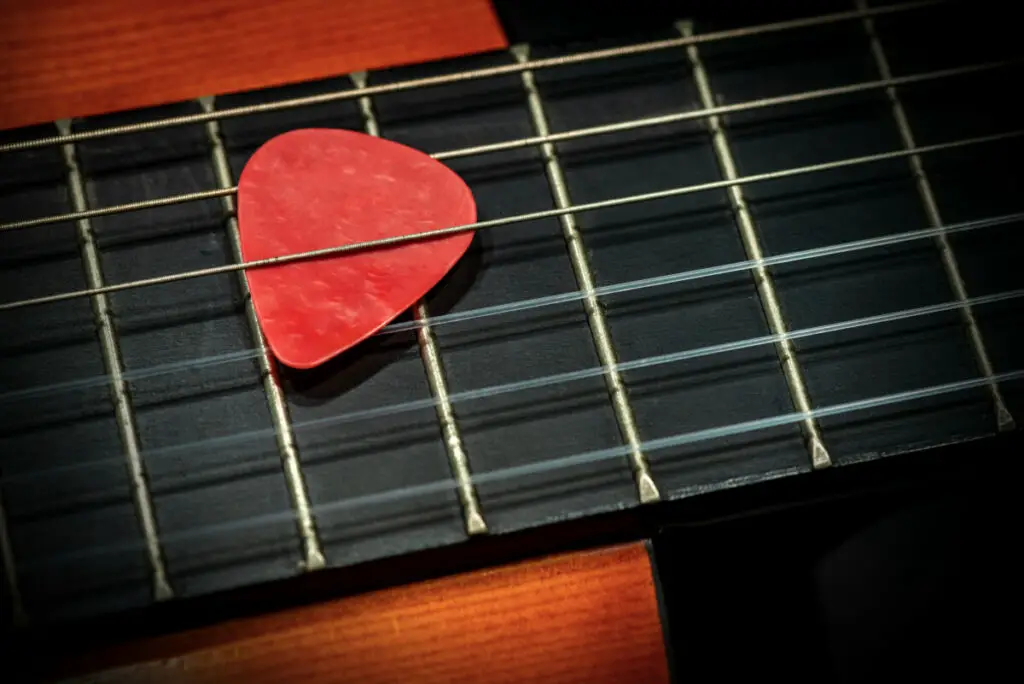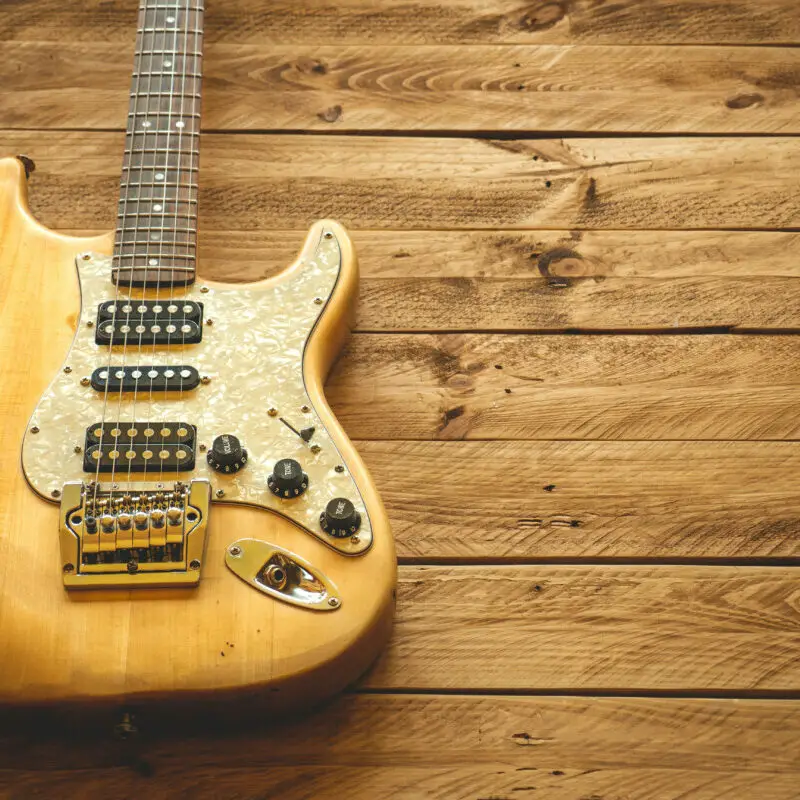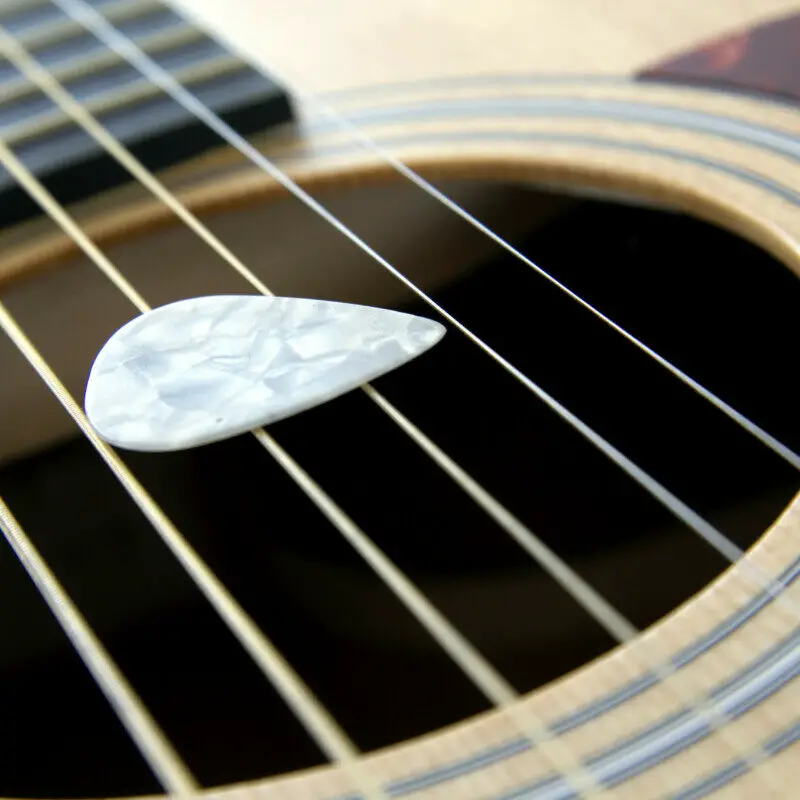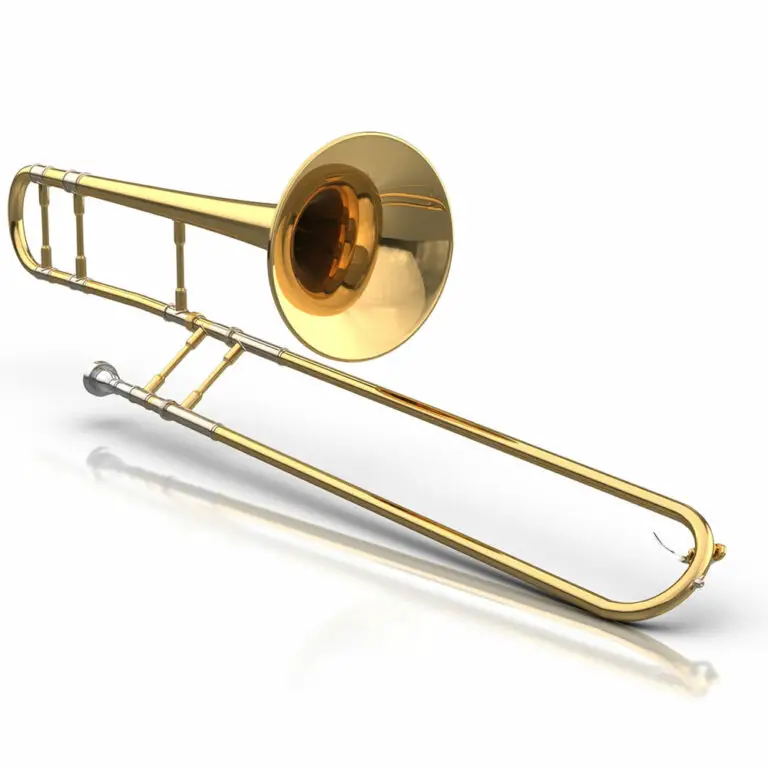Do Picks Damage Guitars? A Guide To Preventing Scuffs

Fingerpicking is a popular alternative to using guitar picks. In fact, some purists might claim they fingerpick to preserve their guitar. However, do picks damage guitars?
Picks do not damage guitars if the player is careful. A guitar player is more likely to damage the finish and strings of their guitar if they use a metal guitar pick. It’s recommended that a guitar player use a plastic or wooden guitar pick when first playing the guitar.
When your fingers slip, and your pick strikes the guitar, you might have some damage. This means the material of your pick affects the potential damage. Below, you’ll learn more about how picks can damage your guitar.
Do Metal Guitar Picks Damage Your Guitar?
Metal guitar picks are not flexible, making them more sturdy than other types These picks are made from stainless steel, nickel, silver, or aluminum.
Because metal is stronger than plastic, whatever you strike with it is damaged faster. This includes strings and your body. Even a single strike can damage the finish of your body, and metal picks are more likely to do it than other types.
Are Metal Guitar Picks Worth It?
The sound you get with a metal guitar pick is quite a bit more aggressive than the sound produced by other types of guitar picks. They are especially handy if you play the electric guitar and are ideal for heavier playing styles.
Metal guitar picks give your guitar a unique sound, which is worth the wear and tear of the strings for some guitarists. If you prefer metal picks, you will definitely need to change your guitar strings more often. However, you won’t have to change your pick as often as if you use plastic ones.
Do Wood Guitar Picks Damage Your Guitar?

Wooden guitar picks have been around for quite a while but are not as popular as plastic and metal ones. But since they are fairly sturdy, they can damage your guitar’s paint if you slip.
They are far less likely to scratch the finish than metal variants.
Are Wood Guitar Picks Worth It?
Wooden picks are made from cocobolo, teak, rosewood, celluloid, wedge, or maple wood. Their material makes them ideal for acoustic guitars, as they match the finish. This makes them worth the risk.
The main difference between plastic and wooden guitar picks is the thickness. Wood guitar picks are much thicker and have zero flexibility, making them more difficult to use.
The sound from one of these picks will also be very different than the sound produced by the other two types of picks. Some people also prefer the feel of wood against their fingertips.
Three Kinds of Plastic Guitar Picks (and How They Might Damage Your Guitar)
Plastic guitar picks are made from a variety of different materials, including nylon, celluloid, or Delrin. Plastic guitar picks have been the go-to material for years because they are inexpensive and easy to make. They are also the least likely to cause damage to your guitar strings or finish.
1. Nylon Guitar Picks
Nylon is a very flexible plastic and is the best kind of guitar pick material for beginner guitar players. Many guitarists say that nylon guitar picks create a warm, mellow tone when compared to stiff guitar picks.
People also say that these kinds of picks create a more vintage tone, as you can hear nylon picks in action in the earliest rock or blues music. Nylon picks are usually solid in color and have a textured grip on the top half of the pick.
2. Celluloid Guitar Picks
Many guitarists used to use tortoise shells for their guitar picks, which is now banned. To mimic the tortoise shell, guitarists use the celluloid guitar pick, even though it is much more flexible.
This kind of material is a lot less flexible than nylon, making them more likely to damage your guitar. These picks have a pearl-like texture to emulate the look of a tortoise shell.
3. Delrin Guitar Picks
Delrin picks are also a little stiffer than nylon guitar picks, which makes them produce a more high-end tone. The most noticeable difference between Delrin and the other kinds of picks is its texture.
It has a more powdery feel that allows your fingers to grip the pick a lot easier. It also creates a nice amount of friction against the strings. Delrin picks are also normally solid-colored.
How to Hold a Guitar Pick So You Don’t Damage Your Instrument

The way that you hold a guitar pick is incredibly important. If you hold your guitar pick correctly, you’ll prevent damage to your guitar.
An improper pick-holding technique can affect your musical learning journey and can be very difficult to unlearn. A grip that’s too tight can cause cramping, and a grip that’s too loose will cause the pick to fly out of your hand.
Here are the steps for properly holding your pick:
- Make sure that your strumming hand is always relaxed so that you aren’t pressing too hard on the guitar strings. When your hand is more relaxed, the guitar will sound a lot better when you are strumming.
- Gently put your index finger and thumb together. Then simply close your other three fingers towards your palm.
- Make sure to slide the pick in between the thumb and the outer edge of your index finger.
- Do this so that the index finger is pointing down towards the tip of your guitar pick.
Once you have our hand placement down, be sure to hold the pick firmly but not too tightly. Part of your thumb needs to be on the top of your pick to avoid any shifting while you are strumming.
If you are strumming, you will want more of the pick to be exposed. If you are trying to pick single notes, make sure to have less of the pic exposed in order to have better accuracy in hitting single notes.







